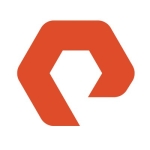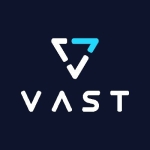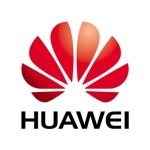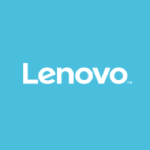What is our primary use case?
It's primary storage. It started off as just being spinning disk, but recently we've had a lot of traction with customers adding flash and even going to all-flash systems. Some of our customers have had it six, seven, eight years.
It performs quite well. We had a customer who had an Oracle all-flash system, and they needed to run VMs in their disaster recovery facility and, of course, they did not want to purchase the Oracle storage because it's extremely expensive. So, they added flash to their existing Compellent storage, they were using a DR for the other stuff. It has performed quite well for them.
How has it helped my organization?
One of the nice things about it is that there is no forklift upgrade required to upgrade the storage. That's why a lot of our customers like it.
The maintenance is usually pretty good. It's not like some of the others where they increase it in the fourth, fifth, or sixth years. That's another reason the customers like it.
We've been able to maintain a lot of customers over the last six or seven years. We actually started selling the SC Series - it was called the Compellent - before Dell purchased them.
We had picked it as a strategic storage for our company to sell. It has been good to us over the years. We continue to make a lot of sales.
What is most valuable?
The most valuable feature is the no-forklift upgrade. While the thing is running, I can change out the controllers one at a time and keep the customer up and running. I can add shelves and storage and SSD drives or spinning drives to the system, while it's running. I can bring all that in and rebalance the load across the new disks or, if we take disks away, rebalance the load across what's remaining, and it just works.
Also, in terms of auto-tieriing, Compellent writes all of its writes into Tier 1, unless of course you do something silly and pin a whole bunch of LUNS, which means you're telling your VM, your data stores, that they have to live in that top-tier storage. As long as you follow the best practices recommendations and let it do its own auto-tiering then it works very well.
In most cases the customers with all-flash, most of their active data lives in flash. So, they're really using all of those IOPS and performance in that tier, and the other tier or tiers are just being used for cold data storage. It works very well, as long as customers follow the best practices there.
What needs improvement?
We can definitely see a need for it being a multi-controller system for customers who want to scale beyond the current capability. That's always a downside. A lot of the new systems are scaling vertically, they scale out, and the Compellent, of course, is controllers with shelves under it, so you don't scale out with it, unless you add another one. But if you do, they don't talk to each other, like some of the other solutions that we sell.
Buyer's Guide
Dell SC Series
October 2025
Learn what your peers think about Dell SC Series. Get advice and tips from experienced pros sharing their opinions. Updated: October 2025.
869,089 professionals have used our research since 2012.
For how long have I used the solution?
More than five years.
What do I think about the stability of the solution?
It's absolutely stable. There were some issues in the early days with the tiering, but they straightened that out. What was happening was, if the first tier filled up - and it wasn't necessarily because of pinning - but if the first tier filled up because you overran the "write" amount that you had in the first tier, it died, actually.
Dell EMC was really quick in fixing that. Now, if it gets to 90 percent, if you start to overrun that tier, it will start moving stuff automatically. It doesn't have to wait for the tiering, "seven down and three up." The way that it works is, if you're in the top tier here and something is not accessed in the last seven days, it will move down to the next tier and it takes three days to move it up. But with it automatically tiering it down, it can automatically go and take it out of there if it sees that it's going to fill up.
What do I think about the scalability of the solution?
It scales very well. It's not a multi-controller system right now. They are limited to two controllers, like some of the others. It is an active-active controller, so both controllers are processing LUNS. One of them is called the leader and it is the transcriber - think of it as the "court reporter" guy. But both of them actually take reads and writes.
How are customer service and support?
I do use technical support quite often. In fact, any time I do an upgrade I call Copilot and let them know that I'm going to be doing an upgrade, in case anything happens and they get an alert. They'll also do a system check for me so that I know everything's working at 100 percent before I go in there and start pulling cables or adding cables. It gives me peace of mind. A customer can't say, "Well, you broke it." It was that way before we started. And in some cases, support won't let me start the upgrade, they'll advise me not to. I work with them quite a bit. They are probably the best support that you'll find.
But recently, things have changed a little bit. I have gotten some wrong answers from Copilot. I have to double-check their work on certain things. I've had at least three times where I've gotten the wrong answer from someone, which is not good.
But they're always responsive, whether you call at three in the morning or three in the afternoon. It's the same group of people up in Minnesota. They're not in India, they're not in the UK, they're not in Turkey, they're not somewhere where they have a thick accent and you can't understand them.
I think the reason for the changes, from what I'm seeing and what I've heard, is that they have now started pulling some of the other storage people, who may have done the EqualLogic stuff, the lower-end storage, into the Copilot fold, and are having them do the support. I'm sure it's just a popularity thing.
We were concerned too, when EMC came on board, that Dell would bury the SC line at some point. What we've been told is that they're going to continue it on. It's a much better product than even they imagined. It seems the product is going to stick around for a while, from what we've been told by Dell EMC.
Which solution did I use previously and why did I switch?
We still sell some EqualLogic. I had worked with that before. I had also worked with the EMC Series for many years, back to 2000. I still do both EqualLogic and SC Series.
How was the initial setup?
I'm a certified SC Storage Engineer and when our company sells the SC Series, I will go out and install it. I've been doing it for a long time so I can do a lot of the stuff with my eyes closed now.
It's not something that an end-user is going to pull out of the box and set up. You have to some knowledge of the SAS chaining, how it works with the Compellent, and how you load the software and how to set it up. It does have a pretty easy GUI on the setup. It's not command-line-based like some other stuff. The SAS chaining is the hardest part to understand.
What was our ROI?
We just had a customer that ripped out a whole cabinet of spinning disks and they're down now to one shelf of 24 flash disks and three shelves of spinning disk to replace all that. We're talking about a huge return on power, cooling, rack space, and cost of maintenance, because they do charge by the shelf for their maintenance. Now they've got four shelves as opposed to 18 or 19 that they had before. That maintenance cost goes down quite a bit because of that and that's all because of the SSD drives now, being able to add those in.
About four or five years ago, they finally brought on the what we call the hybrid and full SSD to existing customers. Initially, it started off that only new systems could be all-flash, and now we're going back and we're seeing a lot of our customers who add the flash in and revitalize their whole storage system, completely.
What's my experience with pricing, setup cost, and licensing?
It's absolutely affordable. Again, not having to do a forklift upgrade, like some of the others have had to do in the past, it's very affordable for our customers and they continue to buy.
Which other solutions did I evaluate?
We have looked at different solutions over the years. We represent quite a few: EqualLogic, the SC Series, NetApp, and, now that HPE has Nimble, we sell Nimble. About the only ones we don't sell are Pure and Tintri.
We looked at a lot of others, back in the day, that are gone now. Going with the EqualLogic and the SC Series was a wise choice because they're still here, seven or eight years later and people are still buying them and people are still upgrading.
What other advice do I have?
The SC Series is not the thing for your mom and pop shop. It is an enterprise-grade, mid-tier business type solution. It depends on how much space you need. Some situations can be fine with the EqualLogic series, although that's going to go away and, perhaps, the lower-end Unity's will replace them. You have to look at all those factors.
In terms of performance with mixed workloads, generally, the Compellent has been very good. If it's over the 20ms mark that's not good, but I have never seen any problems with that, in particular, when we've added flash.
In terms of migrations, I haven't used the built-in capabilities. I'll use VMware's VMotion to move things from one SAN to the other. A couple of years ago I had a Compellent upgrade where, at that time, they didn't support the upgrade I mentioned earlier, where you do one controller at a time on that thicker model, so I had to set them up side by side. They had some physical servers and I just used replication to replicate the LUNS over to the new SAN. I then shut down the physical servers for a few minutes and pointed everything to the new SAN and that worked great. I know they do have the data import, it's just something that we don't generally use because most of our customers are fully virtualized.
We sell the equipment and install it. I do both sides of the field, the engineering, both pre-sales and post-sales.
We still have a lot of customers that are in the 6 series. A lot of our customers have moved up to 7.1. If you have the SSD drives, then you can do things like dedupe, which you can't do on the older versions, and you can't do if you don't have the SSD drives. Evidently, the deduplication uses some part of the SSD drives for metadata or something like that, so that's a must.
There's some new stuff coming with 7.3, which just got released, where they're spreading the sparing across the whole array, rather than having a dedicated spare disk, and having it sit there and do nothing until one of them dies, and then it kicks in - and having to rebuild all of that. Now, they'll do the sparing across all the disks and they say that is not only going to add space but performance to the array. I've got a couple of customers that want to use that very soon.
I like the SC Series. I enjoy working with it. We've done a lot of sales lately, which is kind of surprising with all the new, fancy, all-flash arrays out there. Customers really don't need all-flash today, and that's really where SC fills in, with its auto-tiering, hybrid - mixed SSDs and spinning disks - customers just don't need all-flash systems. They don't have that kind of workload.
Disclosure: My company has a business relationship with this vendor other than being a customer. Partner and reseller.












